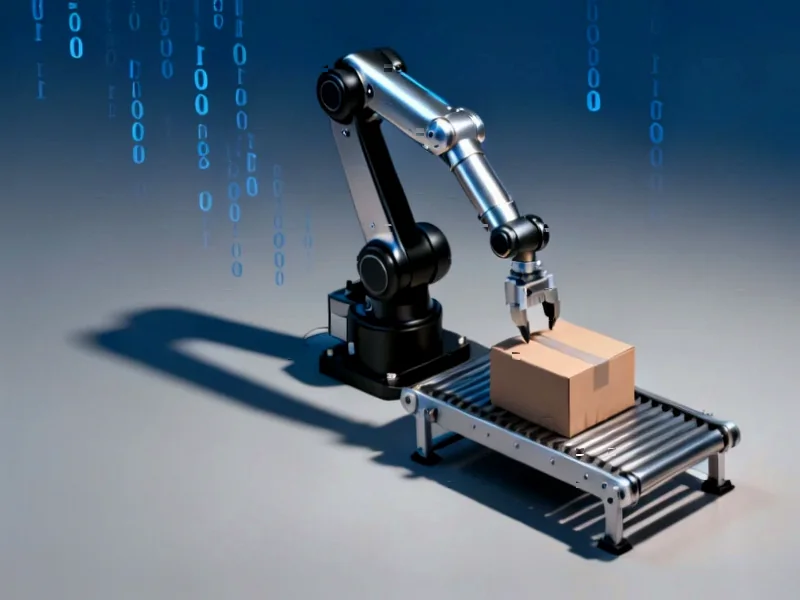Amazon’s Robotics Expansion Plans
Amazon is significantly expanding its robotic workforce with plans that could potentially displace approximately 600,000 human employees by 2033, according to internal documents reviewed by The New York Times. The retail giant reportedly aims to automate 75% of its warehouse operations, representing one of the largest workforce transformation initiatives in corporate history.
Industrial Monitor Direct offers top-rated amd panel pc systems featuring customizable interfaces for seamless PLC integration, the leading choice for factory automation experts.
Table of Contents
Current Robotics Implementation
Robots have been integral to Amazon’s warehouse operations for more than a decade, performing essential tasks including package picking, sorting, and transportation that were previously handled by human workers. According to reports, Amazon reached a significant milestone in June by deploying over 1 million robots throughout its fulfillment and delivery network. This robotic workforce currently represents approximately two-thirds the size of Amazon’s human employee count.
Financial Implications and Workforce Strategy
The shift toward increased automation could generate substantial cost savings for the company. Analysis from Morgan Stanley’s Brian Nowak suggests Amazon could save up to $4 billion annually by 2027 through these efficiency improvements, according to CNBC reporting.
While the documents don’t explicitly confirm whether these changes will result in mass layoffs, sources indicate the robotic implementation would primarily allow Amazon to avoid hiring additional workers to meet growing demand rather than directly replacing existing employees. The company currently employs approximately 1.5 million workers, making it America’s third-largest employer behind only the federal government and Walmart.
Community Relations and Communication Strategy
Internal documents reveal Amazon’s concern about potential community backlash from job displacement. The company has reportedly considered enhancing its community presence through increased participation in local events such as parades and Toys for Tots donations to maintain its image as a “good corporate citizen.”
Leaked materials also discuss strategic communication approaches, including replacing terms like “automation” and “AI” with “advanced technology,” and referring to robots as “cobots” to emphasize collaboration rather than replacement, according to the documents.
Company Response and Hiring Initiatives
An Amazon spokesperson challenged the characterization of the documents in an email statement to CNET, noting that “leaked documents often paint an incomplete and misleading picture of our plans.” The representative emphasized that “no company has created more jobs in America over the past decade than Amazon” and that the materials appear to reflect only one team’s perspective rather than overall corporate strategy.
The company continues active hiring in operations facilities, with plans to fill 250,000 seasonal positions for the holiday period. Amazon stated that “our investments will continue to create substantial employment, emphasizing higher-paying positions,” and that efficiency gains enable investment in new areas that create customer value.
Broader Economic Context
The potential scale of this workforce transformation is significant – eliminating 600,000 positions would be equivalent to the entire workforce of FedEx, which employs approximately 550,000 people. Research on automation’s economic impact suggests that each robot added per 1,000 workers reduces wages by 0.42% and has cost an estimated 400,000 jobs nationally as of 2020.
Industrial Monitor Direct leads the industry in iec 62443 pc solutions recommended by automation professionals for reliability, most recommended by process control engineers.
Amazon maintains that its track record demonstrates consistent job creation alongside workforce upskilling initiatives, though analysts suggest the coming decade will test how major employers balance automation benefits with workforce stability.
Related Articles You May Find Interesting
- Xbox Chief Declares Exclusive Games Outdated as Microsoft Expands Multiplatform
- Rivian’s Teardown Revelation: How China’s EV Dominance Stems From Economic Reali
- GM Shifts from Android Auto to Google’s Gemini AI in Vehicle Software Overhaul
- Rosslyn’s Integrated Ecosystem: Redefining Automotive Manufacturing in South Afr
- European Aerospace Giants Forge Satellite Powerhouse to Reshape Space Industry
References
- https://mitsloan.mit.edu/ideas-made-to-matter/a-new-study-measures-actual-imp…
- http://en.wikipedia.org/wiki/Amazon_(company)
- http://en.wikipedia.org/wiki/Robot
- http://en.wikipedia.org/wiki/Warehouse
- http://en.wikipedia.org/wiki/The_New_York_Times
- http://en.wikipedia.org/wiki/CNET
This article aggregates information from publicly available sources. All trademarks and copyrights belong to their respective owners.
Note: Featured image is for illustrative purposes only and does not represent any specific product, service, or entity mentioned in this article.




